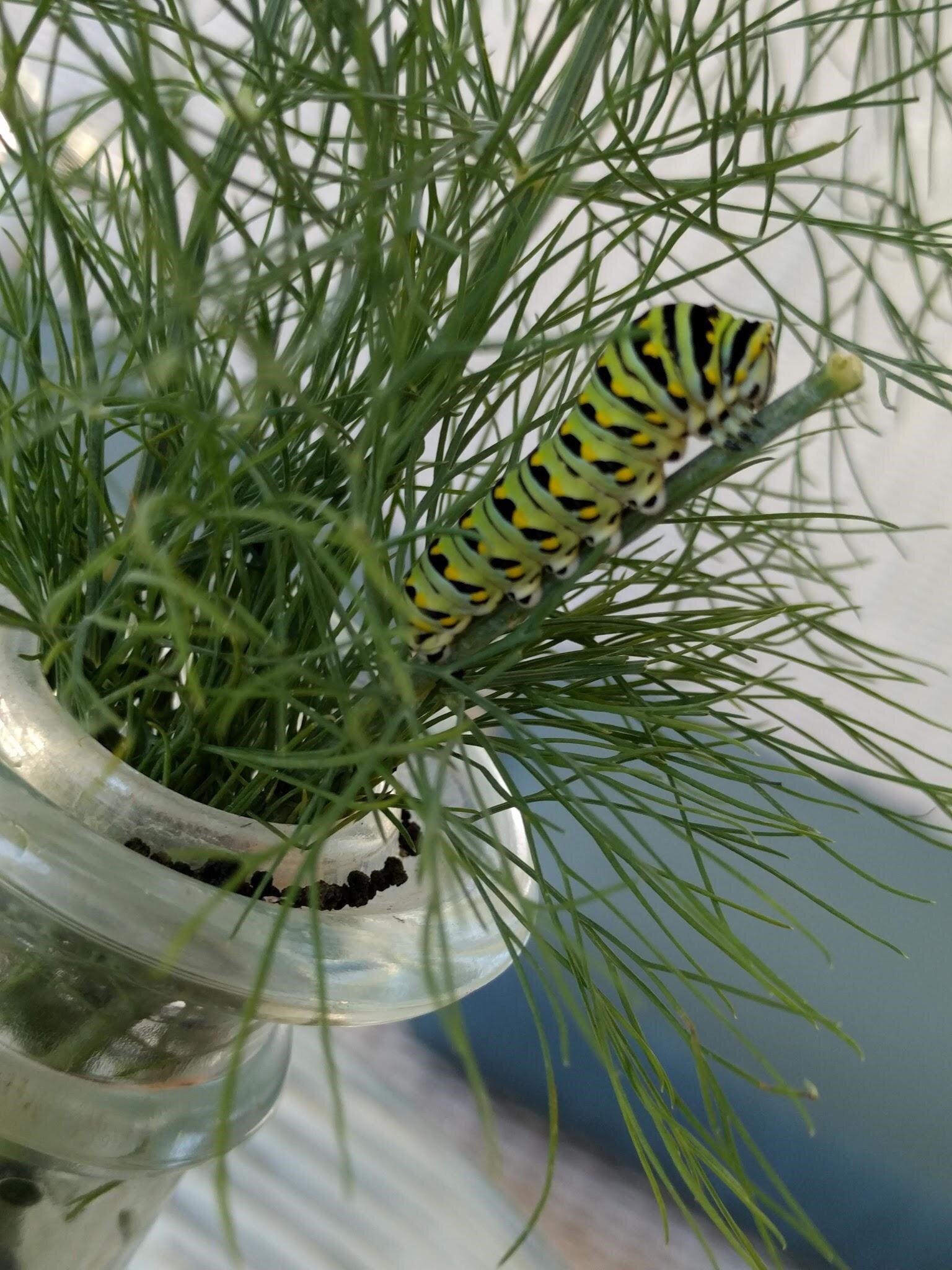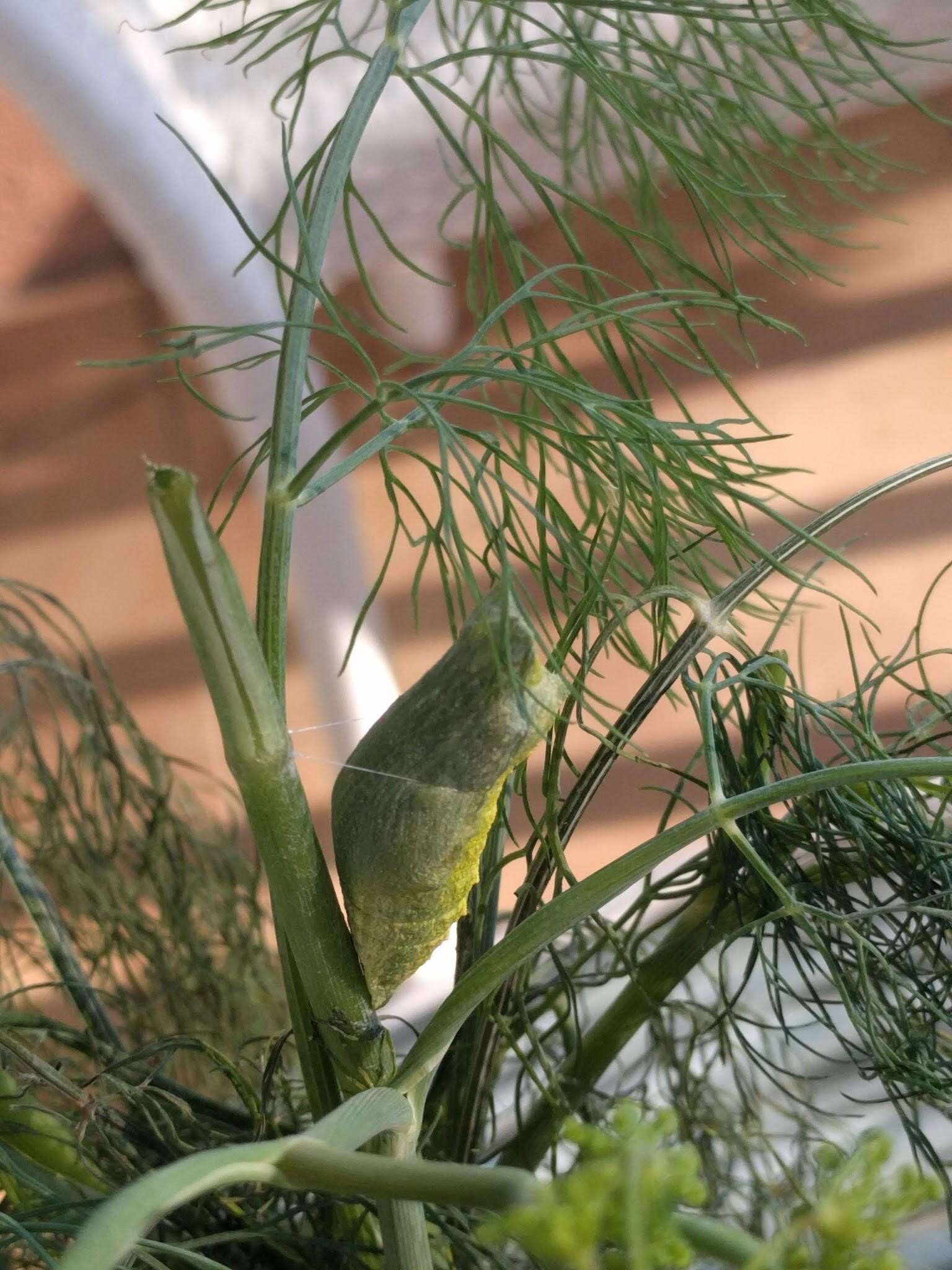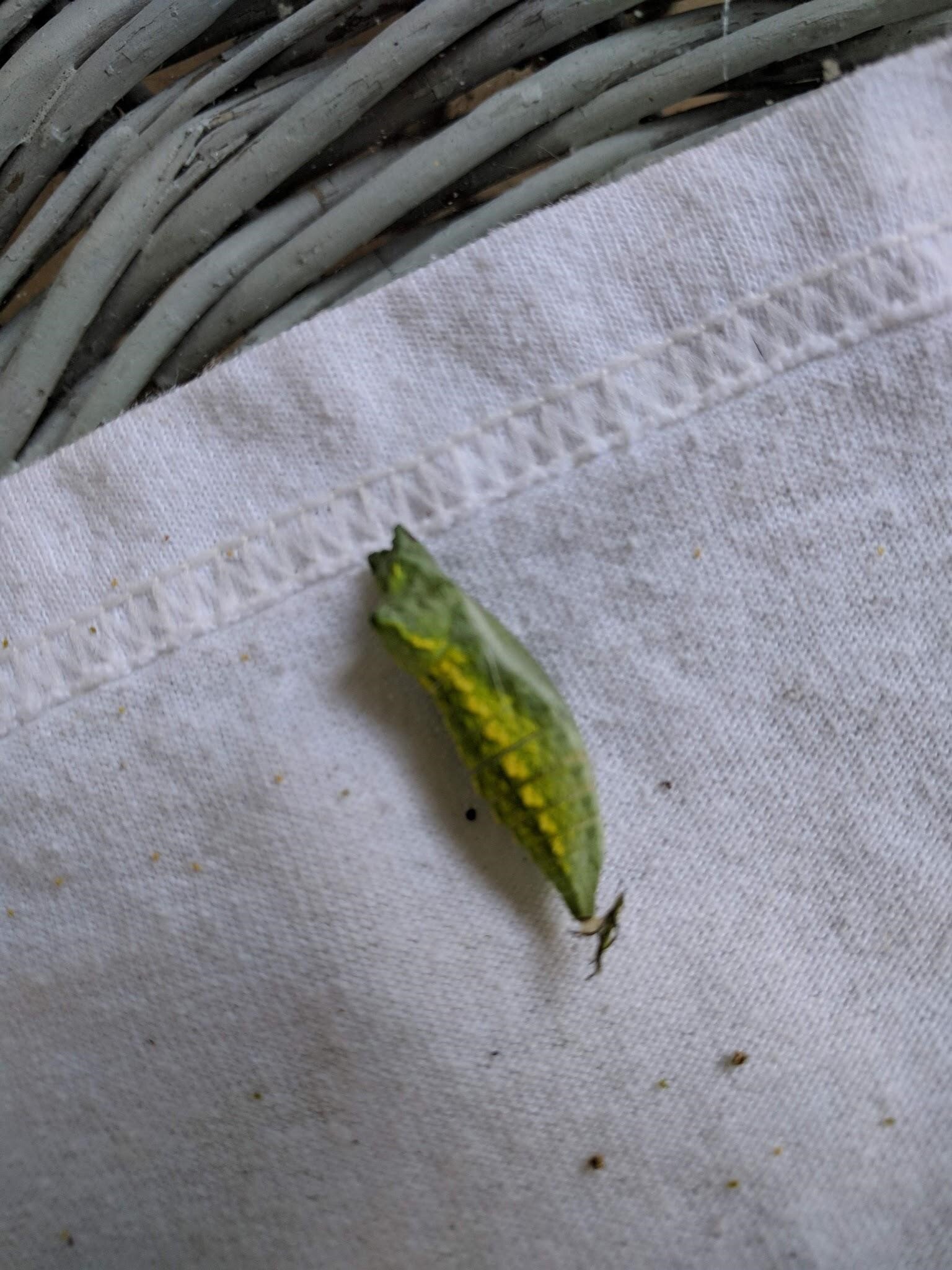Raising Black Swallowtail Butterflies
I started my adventure raising black swallowtail butterflies last summer when I gave a neighbor some kale, which is abundant in my veggie garden. I asked my neighbor, Laura, if she would like some dill from my garden also. She accepted my offer of dill. About twenty minutes later Laura returned to my house with the handful of dill. She said, you’ve got butterfly eggs on this dill! I had never thought to look for butterfly eggs on my dill. Laura had raised monarch butterflies, so she knew what butterfly eggs look like.
I put the dill in a vase of water and watched the tiny eggs, barely visible, turn into tiny caterpillars that munched voraciously on dill plants. I kept adding fresh dill and parsley to the vase, as the little cats (caterpillars) ate. Fortunately, I already had a butterfly enclosure in my basement that had been given to me. I put the vase in the butterfly house on my covered porch where the cats were completely safe. The cats were out of direct sunlight almost all day, until late afternoon. Every few days I cleaned out the vase, and cleaned the bottom of the enclosure to clean up the caterpillar poop which is called frass. The caterpillars got bigger, but they also looked much different from the first stage of their caterpillar life, to the next stage.
My first caterpillar, when he became plump, became very active all of a sudden. He stopped eating and crawled all around the enclosure. Then he became very still. Being a first time butterfly mom, I was worried that there was something wrong with my caterpillar. However, the next day he attached himself to a stick that I put on the floor of the enclosure. Then I saw the chrysalis. It started out plump, and then shrank in size. It was 8 days from the time I saw the eggs until my first cat became a chrysalis. After nine days, butterfly number one emerged from the chrysalis. Like any new mom, I just couldn’t get enough pictures of my amazing butterfly! I watched it and talked to it, until its wings dried about two hours later. When it started becoming active after two hours, I knew it was ready to be released. I invited my friend Emma to come and watch the release of my first butterfly.
I kept an eye on three caterpillars on a dill plant in my garden. (See first photo). When it looked like they might be in trouble because a dill stem was dangling, I took them in. Caterpillar number two decided to make his chrysalis on a stem of dill, instead of a stick on the bottom of the enclosure. I didn’t know what to do because I didn’t know how I could keep a stem of dill alive for nine days. After doing some research on the internet, I decided to remove the chrysalis from the dill stem and glue it on a stick. I discovered that the silk strings holding the chrysalis on the stem are very strong, although they look delicate. After painstakingly removing the chrysalis from the stem, I tried to glue it onto a stick. This did not work. Then I went back to the internet and found out that for black swallowtail chrysalises, they will be fine just lying on the bottom of the enclosure; they don’t need to be suspended. I worried that I hurt the poor chrysalis because I handled it so much, but thankfully it survived!
The fourth black swallowtail that I raised successfully, I named Charlie. Charlie was extra special because he is the only caterpillar that I handled, and when I picked him up, he did not poke out his antennae at me. Black swallowtail caterpillars are unique in that they show when they are afraid by poking out their little red antennae. Maybe Charlie was not afraid of me because I talked to him a lot. So the first time I picked up Charlie was when he was trying to explore his world. He was gathering all of his courage to try to drop from the dill plant in the vase, to the bottom of the butterfly enclosure. He kept at it for a long time, reaching downward with his little body, and then retreating to the safety of the dill plant. Finally, I couldn’t watch Charlie struggle any longer without helping him; I picked him up and set him down on a stiff gardening glove that I put on the floor of the enclosure for a caterpillar ladder. The next problem was that Charlie went up instead of down on his caterpillar ladder. So I picked him up again and got him headed in the right direction. Finally he crawled all around the enclosure to choose a perfect place to make a chrysalis. The third time I picked up Charlie it was because he chose to make his chrysalis right in the middle of the zipper on the door of the enclosure. This was not going to work because butterfly number three would need to be released before Charlie emerged as a butterfly. While Charlie was very still, but had not yet made a chrysalis, I moved him to the end of the zipper. He apparently thought this was a suitable place to make a chrysalis.
I had suspected that Charlie would be born as a butterfly on August 20th, because I noticed a subtle change in the color of the chrysalis the evening before. The chrysalis darkened. I was delighted to spend time with Charlie as a butterfly when he emerged early in the morning. Of course, I took lots of pictures. I wanted to release Charlie, but he wasn’t quite ready to fly yet because his wings were still drying. I needed to leave for work, so I called my friend Gwen for her to watch Charlie fly away. Charlie landed on her before he flew away!
I think that Charlie came back to say hi to me a few days after he was born. I have lots of monarch butterflies fluttering through my yard, but not so many black swallowtails. The colors matched Charlie’s colors, so I’m fairly certain it was Charlie. I’m a proud butterfly mama!
In order to help the black swallowtail butterflies, plant dill, parsley, and fennel, because these are the host plants of black swallowtails. Also, don’t use any chemicals on your lawn or on your garden plants. I recommend the following nectar plants for butterflies: zinnias, Mexican sunflowers, common milkweed, swamp milkweed, butterfly weed, and purple coneflowers.
All photos shown in this article were taken by Jenifer Garlitz.






